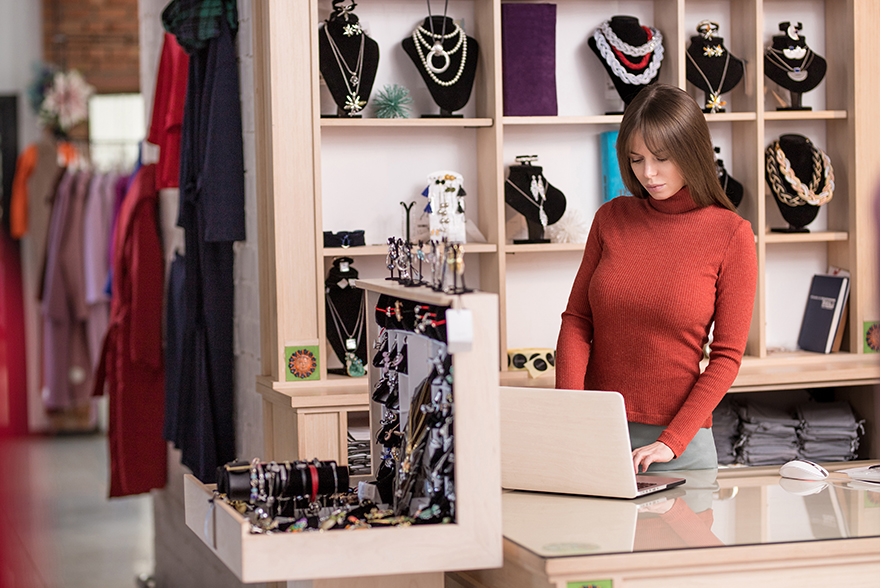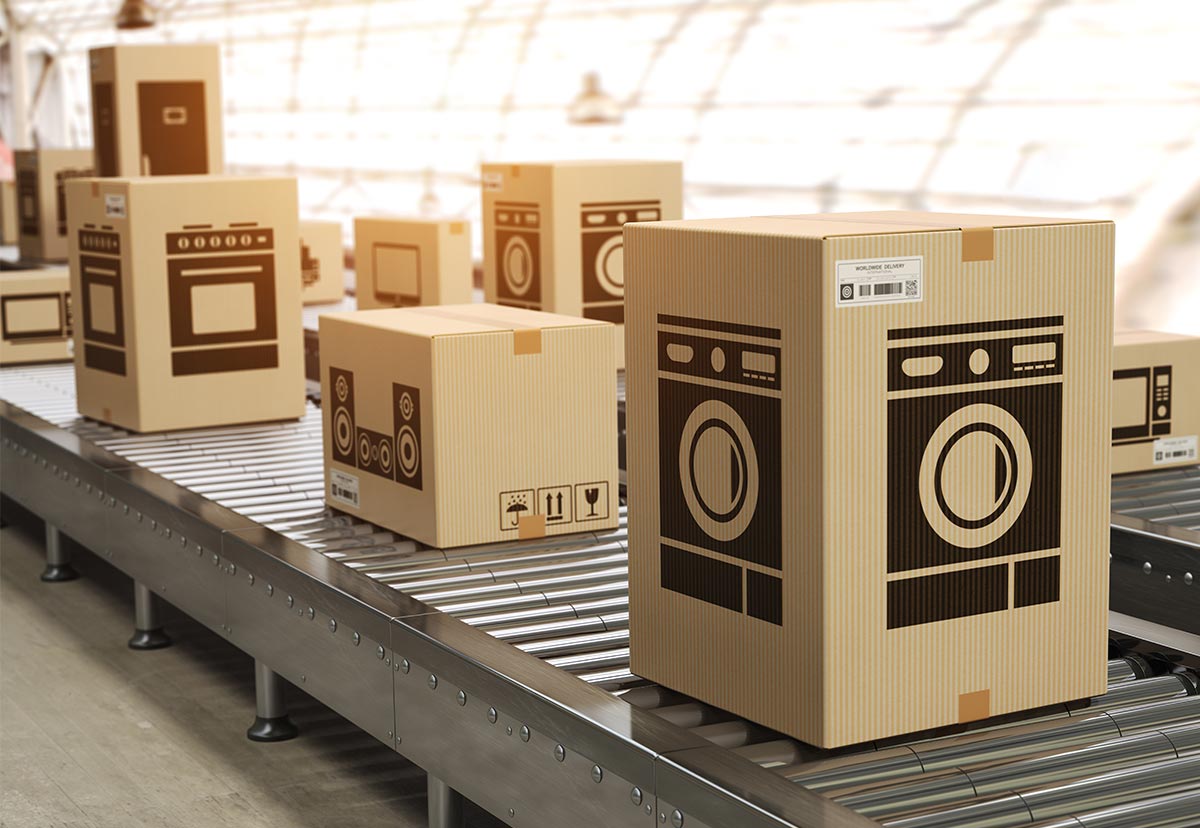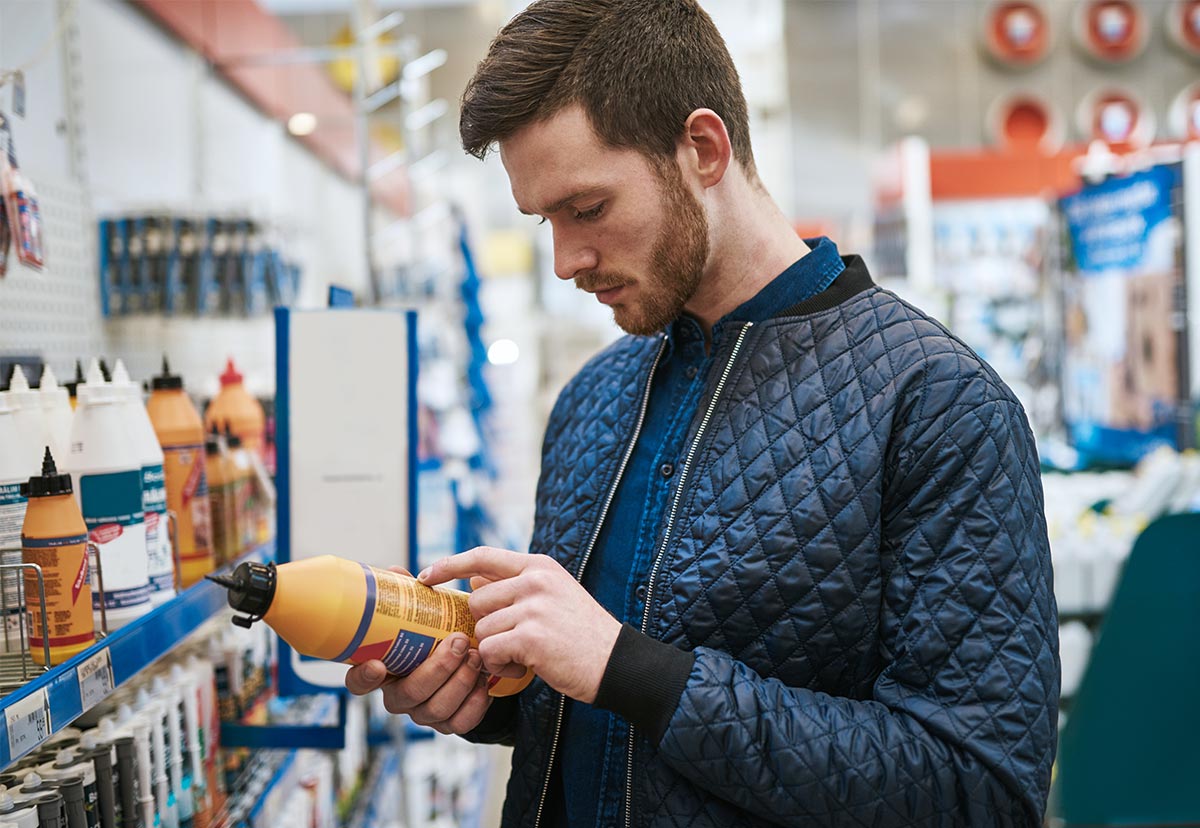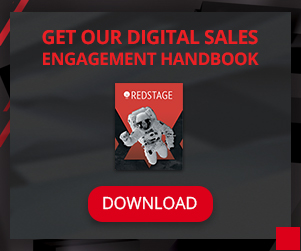
Merging Bricks and Clicks: 5 Omnichannel Resolutions for 2019 and Beyond
Happy New Year! With 11 months of heavy-lifting ahead of you, there’s no better time to work smarter. To help, we’ve compiled this list of 5 Omnichannel Resolutions to incorporate into your 2019 eCommerce strategy. There’s a lot here, so bookmark this page and subscribe to ensure you’ll never miss a tip that will give your brand a competitive edge.
#5: Monitor & Group KPIs for Data-Driven Decision Making
Here’s a short list of the standard KPIs that marketers, operations professionals, and eCommerce managers use. Most, if not all of these should be familiar to you. We put them into a few separate buckets that help achieve specific goals. Our team recommends organizing them in a similar way, as each can help you create a simple report rather quickly, and each tells a very different story. Even if you have software that does this for you, putting stats in different tranches like this can help you identify key trends you can act on. Hover over KPIs for individual calculation formulas.
Customer Engagement KPIs
These KPIs allow you to see at a glance how your site is performing:
- Site Traffic
- Mobile Site Traffic (Make sure you’re using this in 2019!)
- Returning vs. New Visitors (includes non-converting traffic)
- Returning vs. New Customers (excludes non-converting traffic)
- Page Views Per Visitor
- Newsletter Subscribers
- SMS Subscribers
- Site Uptime %
Budget Management KPIs
Here we have a short list of “must-have” budget-oriented KPIs:
- Average Margin
- Return on Investment (ROI)
- Fulfillment Costs (Especially Cost of Returns)
Customer Feedback KPIs
There are additional customer-facing stats you should keep an eye on, which help identify how your customers feel about your products, service, user experience, and more. Under analysis, these metrics are helpful for determining where friction occurs in the buying process. For example:
- Customer Satisfaction Score
- Net Promoter Score
- Customer Service Avg. Response Time
- Customer Service Call Count
- Customer Service Email Count
- Customer Service Chat Count (for those with chatbots)
- Average Customer Service Rating (if you have surveys after chats, emails or calls)
- Average Customer Sentiment (with tech like YOTPO, you can gage overall review sentiment)
- Google Reviews Rating (if applicable)
- Yelp Reviews Rating (if applicable)
- Top 10 Products
- Worst 10 Products
- Top 5 Service Strengths
- Top 5 Service Weaknesses
- Number of App ‘Superusers’ (Customers who use your app every day)
Tracking Revenue Per Visitor (RPV)
In 2018, a relatively new KPI began gaining recognition in the market. Revenue Per Visitor (RPV) has been called “the most valuable metric” for gaging online sales performance, and is especially helpful when it comes to A/B testing. To find your RPV value, multiply your conversion rate by your average order value. This gives you an estimate of how much the average customer is spending.
#4: Make A/B Testing A Habit

A/B testing is invaluable. In an age where data-driven decision making has the highest ROI, companies who make experience alterations on a whim are falling behind. Whether its email subject lines or adding a PayPal Express Checkout button, merchants should be testing these changes with sample groups before making them across the board. Do your due diligence and add A/B testing to this year’s resolutions (especially for Mobile optimization).
Mobile Checkout Testing
Throughout 2018, we tested a variety of mobile checkout enhancements, eventually culminating in the global Mobile Optimization Initiative, now open to Magento merchants everywhere. After running tests on the mobile checkout experiences of more than 20 merchants, we noted several key trends, but one stood above others: The need for merchants to A/B test constantly.
Every site is different, and more importantly, every audience is different. While some tests revealed huge opportunities for brands to rake in more dollars on mobile, the same tests flatlined or even resulted in a downturn for other merchants (in a few cases). As the race to close the mobile conversion gap continues, our top piece of advice is to start designing digital experiences for mobile users specifically. Most importantly, merchants must work to understand what their mobile customers expect and how to simplify experiences to match. If you’re interested in learning more about the initiative or getting some of your own mobile experiments in motion, sign up here.
#3: Create Rich, Interactive Brand Experiences

Creating & Curating Today’s Most Resonant Brands
Traditional retail has hit rock bottom. While Sears and Toys ‘R Us are two of the best known casualties, the implications stretch to each and every physical store on the planet. Both retail giants suffered at the hands of decisions that went against their customer experience. For Sears, the decision to switch to “Everyday low prices” was the first nail in the coffin. Prior to this, the company’s coupon catalog had created buzz and drove customers into stores weekly. Without it, there was little customer experience left, especially with a rapidly decaying in-store experience.
Toy’s ‘R Us was no different. Understaffed stores became empty warehouses. Items were difficult to find in these cold depths, and staff were largely unhelpful when it came to navigating the superstores. Eventually, there was no reason customers wanted to go visit physical locations. With other toy retailers offering better prices online, it was easy for the customer base to choose alternative means. Interestingly, in a last-ditch effort to save the brand, Toys ‘R Us created an augmented reality app. With the app, customers could quickly find the products they were after, and kids could play mini games, test out toys, and go on scavenger hunts around the store, guided by an animated giraffe (the company’s mascot). Unfortunately, it was too little too late, but what are today’s resonant brands doing to keep customers engaged?
The In-Store Experience Revolution will Dominate 2019
Amid cries of 2017’s “Retail Apocalypse,” we made a series of predictions for 2018. In an article titled AR & AI: The eCommerce Armsrace we anticipated a revolution for in-store experience technology.
Interestingly, while we were wrong about which DTC giant would debut this tech, we were right to suspect its prompt emergence in the market. In early December, Covergirl shook the global beauty sector by installing an “Experiential Makeup Playground” in its Time Square flagship store. The store uses the latest connected retail technology, including voice, IoT, and augmented reality to let customers ‘try on’ products via smart mirror “glam stations.” Expect the company’s rivals to shortly follow suit.
Brand Loyalty and the Immersive Retail Experience
Nike took a similarly immersive approach with in-store experience upgrades at its first “Nike Live” store on Melrose Ave. in L.A. As soon as shoppers enter the store, geofence technology recognizes the presence of the app on their smartphone. From there, Nike’s customer algorithm will give product recommendations based on shopper stats, style and shoe size. Among the rich, app-driven incentives, Nike will even automatically reserve a pair of shoes customers might like. When customers buy Nike products online, Nike ships them to personal smart lockers in-store that can be accessed simply with a Nike+ member pass. No friction, no waiting, no problem.
The Digital “Show Room”
Both Nike and Covergirl ushered in amazing retail makeovers by leveraging customer data to solve common customer challenges. For Covergirl, the new tech helps customers try out products they might not be able to physically test anywhere else. As a second key benefit, the experience encourages customers to try on more makeup during their session than they typically would. Third, because shoppers are using AR, this doesn’t cause physical product waste like the often seen “try me” lipstick in other stores.
For Nike, a key decision to place the concept shop on Melrose Ave. arose from the fact that “one in fifty pairs of shoes sold in the area was a Nike Cortez, which was reflected in the product selection available to customers,” according to the Fast Company article mentioned above. Based on this data, Nike responded by creating a store where customers could get expedient access to the newest products (which are usually in high demand). The connected retail space also creates a better environment for millennial shoppers who hate interacting with sales staff, something the retail sector has been slow to pick up on.
Experiences like these are the future of brand loyalty. While we predict stores will become more like show-rooms in the coming years, brand experiences like these will drive customer retention & acquisition. The stage has been set for the in-store experience revolution, and the brands that can best serve customers (digitally and physically) will make it known in 2019.
With this push toward immersive brand experiences in brick-and-mortar stores, brands who lack physical locations will need every advantage to ensure a fast, frictionless, and competitive online experience.
#2: Explore and Implement Deep-Personalization

As Apparel Magazine notes, “According to SAP’s Digital Readiness Survey, 75 percent of retailers believe it is important to deliver a valuable, relevant, and personalized experience specific to the consumer. Further, more than 60 percent of retailers believe it’s important to develop context-relevant, personalized recommendations based on consumer sentiment and history.” This rapidly growing trend is why today’s omnichannel push exists. Making your products available to consumers on their favorite platforms like Facebook, Amazon, Ebay and Google is simply a deeper way of aligning brand experiences with the habits of your customer. With this frame of mind, lets explore some additional methods for creating a rich, visible, and convenient brand.
Recalibrate Your Personalization Tech in the Year Ahead
1. PPC, Email, and Remarketing
Revisiting our #4 recommended resolution for the year ahead, A/B testing isn’t limited to the checkout. Review and optimize your lead-attractors, from PPC and remarketing ads to emails, popups, and SMS. Take a good, hard look at your targeting and make sure you’re using your data to its optimal effectiveness. Test out a revitalized approach to mobile advertising. Investigate your messaging effectiveness between channels. Is the message consistent? Should it be? Have your customer expectations changed? Are customers more responsive to different messaging on different channels or devices? Would you consider creating new PPC ad groups by repurposing your best email subject lines of 2018? Analyze, experiment, evaluate, and optimize.
2. Voice Search Marketing
Comscore predicts half of all online searches (or more) will be conducted via voice by 2020. Despite more than 100 million Amazon Alexas being sold to date, voice search only accounted for a measly 0.4% of online sales in 2018. However, $2.1 billion in sales is nothing to ignore. Between 2016 and 2017, voice search went from zero to 10% of all search volume. Today, more than 20% of searches have voice-based intent. Moreover, smart speakers are predicted to penetrate more than 55% of homes by 2022, a figure that doesn’t account for digital assistants already embedded in smartphones. With millennials relying more on mobile eCommerce and a growing interest in IoT, 2019 may be the year we see another jump in voice search. It’s time for retailers to get invested as adoption continues to pick up.
3. Video
Video is a marketer’s best friend. Consumers are “anywhere from 64-85% more likely to buy after watching a product video,” and in 2018 the industry began using them in more creative ways. While tutorials, product videos, and UGC have historically driven sales, merchants with content-driven commerce strategies now use video to enhance, repurpose, and revitalize content. Consider creating interview-style videos where users discuss the product with a member of your team. Host a live Q&A on twitter or facebook for popular products, new releases, or products with high views and low sales. Another option is to record video introductions to new or once-popular blog posts to grab additional clicks on social media.
4. Chatbots
Think what you might about chatbots, but visit any merchant site and they likely have one (or at least a live chat). As customer patience becomes paramount, it’s important to give customers immediate help before they bounce. Moreover, make sure you’re optimizing and changing up your automated greetings at a reasonable pace. Setting up automated conversation paths is another promising benefit of chatbots, and programming responses based on keywords can save time for your sales & support teams.
5. Payments
Newly released data from Adobe and Internet Retailer reinforces once again that mobile sales will continue skyrocketing. As we mentioned earlier, payment options and your checkout process in general needs to be more than simply “responsive.” Mobile customers expect frictionless experiences, and as our research shows, are more likely to buy if you offer payment options like PayPal Express Checkout, Venmo, Apple Pay and even Amazon Pay. However, while we’ve seen success across the board for stores that add the PayPal option before regular checkout, every merchant’s audience will have different preferences. Be sure to make mobile wallet testing a priority, especially before Black Friday rolls around again.
6. Shopping Apps
Shopping apps allow merchants a chance to increase brand value, customer retention, and AOV. The promise of better experiences drives app downloads, which in-turn drive sales and customer loyalty. Think of apps as the most targeted remarketing channel brands can use. The ability to send a notification to a customer is one thing, but getting access to large swaths of individualized data is a whole new world. In this way, apps are the pinnacle of personalization, allowing retailers to alert users about products they might like or share reminders about past purchases they may want to replenish soon. Deals and coupons can be shared instantly, and with the average millennial spending 5.2 hours per day on their smartphone, it’s an avenue worth trying out (The average Gen-Z user spends 5.9 hours on their smartphone per day). Customers generally like apps due to their simplified functionality and UI compared to bulky company websites, and with your brand’s logo on their phone, they’ll likely interact with you more often.
Amazon, Customer Service & Social Selling

According to the Future Shopper Report, 68% of shoppers first visit Amazon.com when searching for products. 80% of shoppers compare prices on Amazon when they’re shopping somewhere else. Why? Because Amazon offers a simple and superior shopping experience. If we dissect the eCommerce monolith, the wide variety of products, wholesale prices, and incredibly fast shipping options make it the easy choice for finding just about anything. All things considered, it’s no wonder Amazon surpassed Google for most product searches last year. That said, theres a lot retailers can learn from Amazon, and several ways to fight back.
For starters, Amazon’s rich product information and advanced search abilities make finding the right product easy. All companies from B2B to B2C can make customer lives easier by following Amazon’s model in these areas. Next, Amazon’s customer support is second to none, replacing lost or damaged items immediately, without additional cost to the consumer (shipping included). In light of this, merchants should work to create better returns policies and frictionless customer service.
Another way to combat Amazon is to succeed in both product authority and social selling. As a specialized retailer, you need to prove yourself as a thought leader to rise above the competition. Whether that means having a presence at Fashion Week, getting influencer endorsements, or simply creating compelling and informative content for your blog — you need to earn authority and respect from your users. You can achieve the same effect by reflecting your extensive industry insight in product descriptions and including niche-specific attributes.
Beating Amazon’s customer support may prove tough, so social selling is another good way to fight back. Rather than focusing on reactive customer support, refocus your sales team’s time and energy on starting conversations that earn trust and influence sales. The team at 4-Tell have some great sales enablement tools, including machine learning algorithms for site search and product recommendations. Sales teams can also build custom product boards to share with customers based on shopping habits. Personalization doesn’t get more personal than that.
#1. Prepare for the Global Omnichannel Transition

Thanks to significant buy-in from major retailers, a global omnichannel transition is now underway. In 2019, more industry titans and mid-tier merchants will progress from the planning and building phase to execution. With this comes a threat to smaller retailers who harbor strong digital backbones, now having to fight on all fronts against groups with bigger budgets. What’s more, as a growing number of B2B companies undergo their own digital and DTC transitions, a realization is coming to the fore: Every business must adopt even stronger logistics capabilities. Here’s how:
Fighting “Faster” with “Frictionless”
With Amazon’s Prime Now option, customers can receive last-minute orders within 2 hours in 50 cities across the united states. However, items available on Prime Now are limited to household goods and groceries, with only a select few grocers (aside from Whole Foods) listing their products on the platform. Since most retailers are unable to compete in terms of delivery time, the industry’s best bet is to drive convenience through pervasiveness.
Use (More) Convenient, Shoppable Channels
Ebay, Newegg, Facebook Marketplace, and Etsy are just a few of the many sites where retailers can flex their omichannel muscle. In line with this thinking, retailers need to up their ad game and start creating more enticing shoppable posts on social media. It’s not enough to have a constant stream of social content. Brands need engaging content that resonates with their audience and keeps them coming back. Take a note from Young & Reckless, the Skateboarding brand that achieved a 3x return on adspend through Instagram. By combining influencer marketing campaigns with branded and shoppable posts, they were able to broaden their audience, reach more customers, and keep their products in the spotlight by aligning with trends and celebrities their audience cares about. In fact, half of the brand’s online traffic comes from social media. That’s the value of resonance.
Understand Return-Psychology

Creating a simple and frictionless return experience was also a key part of Young & Reckless’ success. When customers know you have a safe and sensible return policy (usually with no cost to them), they’re more likely to buy your product. This is all part of eCommerce consumer psychology. Millennials understand the pain of buying something online that turns out to be the wrong size. Next comes the inconvenience of contacting the return center (sometimes a lengthy process), going to the post office, paying for shipping, and sending the product back. Lastly, the customer has to buy the product all over again, only this time, they’re short a few bucks and have to wait for the delivery to arrive all over again.
Having this experience just once might be enough to make customers look elsewhere for the same product, or worse, never shop on your site again. What might seem like a small inconvenience for some is unforgivable in the minds of millennials, who expect the utmost simplicity. When this expectation isn’t met, their trust in the brand is broken. Moreover, as the most cautious customer segment, they may suspect future purchases from your store could result in the same negative experience, compelling them to avoid the risk altogether.
In 2019, retailers should do their best to offer frictionless returns. Your customers will pay you back in spades. Critically review your returns process and policies. Consider using returnable, pre-paid packaging, and if you can, aim for BOPIS options. The Buy-Online, Pick-up In Store revolution is yet another movement born from evolving eCommerce psychology. It not only relieves customer contention points like faster delivery and delivery safety, but gives “bricks-and-clicks” retailers another opportunity to engage with customers in the physical world.
The Wrap-Up
We designed this rather long-winded thought piece for merchants and marketers to vastly enhance customer experiences in 2019. We hope you found some valuable strategies and new ideas to use this year, or at least began to think critically about some aspects of customer satisfaction and engagement you may have overlooked. If you think anything should be added to this article, feel free to share your thoughts in the comments below! If you’re looking for a team of eCommerce veterans to help you achieve your 2019 goals, reach out today to schedule your free project consultation.



Recent Comments